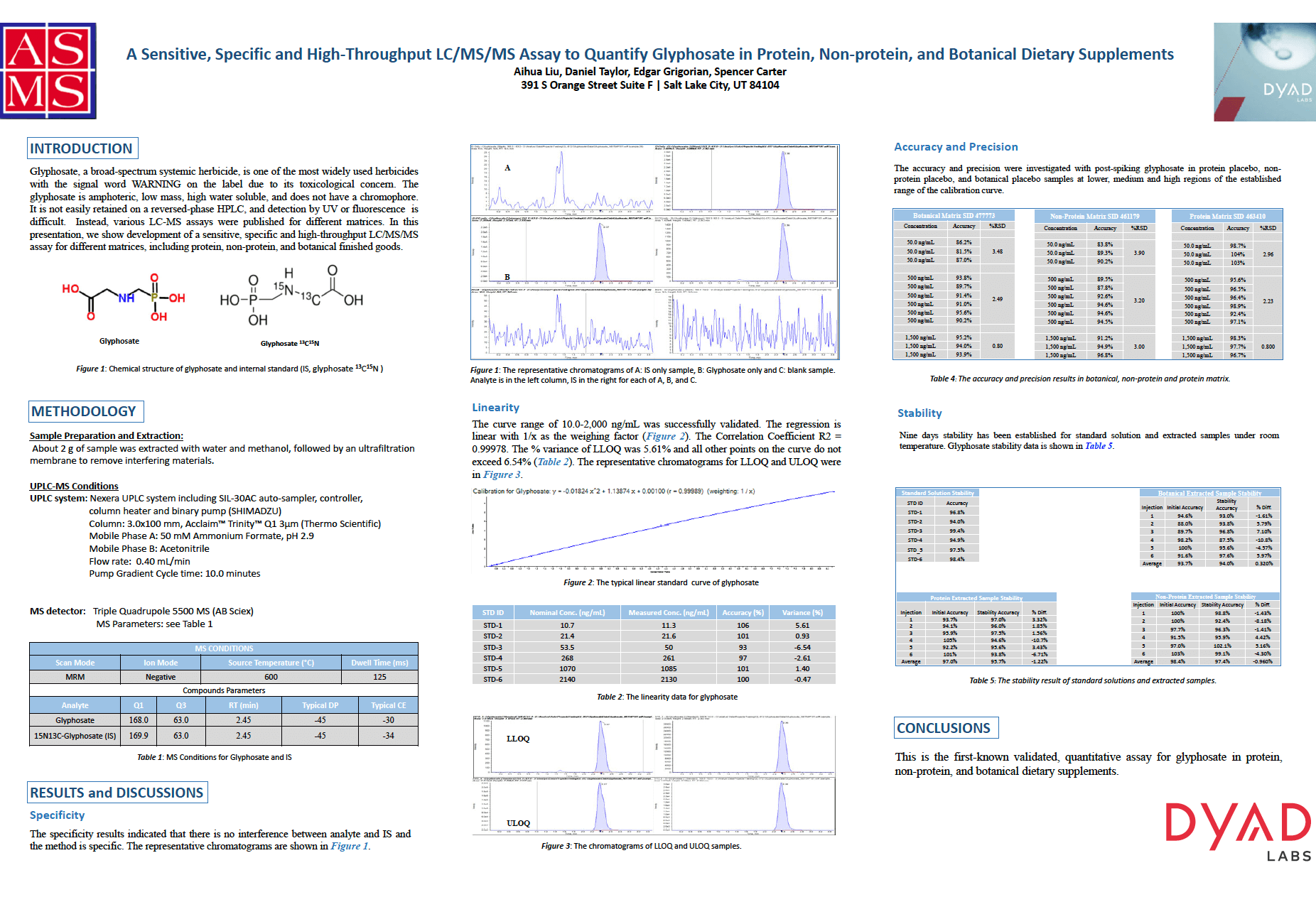ASMS 2018 Glyphosate Analysis by LCMSMS
resources - Recent Conference Materials

A Sensitive, Specific and High‐Throughput LC/MS/MS Assay to Quantify Glyphosate in Protein, Non‐protein, and Botanical Dietary Supplements
Introduction
Glyphosate, a broad-spectrum systemic herbicide, is one of the most widely used herbicides with the signal word WARNING on the label due to its toxicological concern. The glyphosate is amphoteric, low mass, high water soluble, and does not have a chromophore. It is not easily retained on a reversed-phase HPLC, and detection by UV or fluorescence is difficult. Instead, various LC-MS assays were published for different matrices. In this presentation, we show development of a sensitive, specific and high-throughput LC/MS/MS assay for different matrices, including protein, non-protein, and botanical finished goods.
Methodology
Sample Preparation and Extraction:
About 2 g of sample was extracted with water and methanol, followed by an ultrafiltration membrane to remove interfering materials.
UPLC‐MS Conditions
UPLC system: Nexera UPLC system including SIL‐30AC auto‐sampler, controller, column heater and binary pump (SHIMADZU)
Column: 3.0×100 mm, Acclaim™ Trinity™ Q1 3μm (Thermo Scientific)
Mobile Phase A: 50 mM Ammonium Formate, pH 2.9
Mobile Phase B: Acetonitrile
Flow rate: 0.40 mL/min
Pump Gradient Cycle time: 10.0 minutes
MS detector: Triple Quadrupole 5500 MS (AB
Results and Discussions
Specificity: The specificity results indicated that there is no interference between analyte and IS and the method is specific.
Linearity: The curve range of 10.0-2,000 ng/mL was successfully validated. The regression is linear with 1/x as the weighing factor (Figure 2). The Correlation Coefficient R2 = 0.99978. The % variance of LLOQ was 5.61% and all other points on the curve do not exceed 6.54% (Table 2).
Accuracy and Precision: The accuracy and precision were investigated with post-spiking glyphosate in protein placebo, nonprotein placebo, and botanical placebo samples at lower, medium and high regions of the established range of the calibration curve.
Stability: Nine days stability has been established for standard solution and extracted samples under room temperature.
Conclusion
This is the first-known validated, quantitative assay for glyphosate in protein, non-protein, and botanical dietary supplements.

